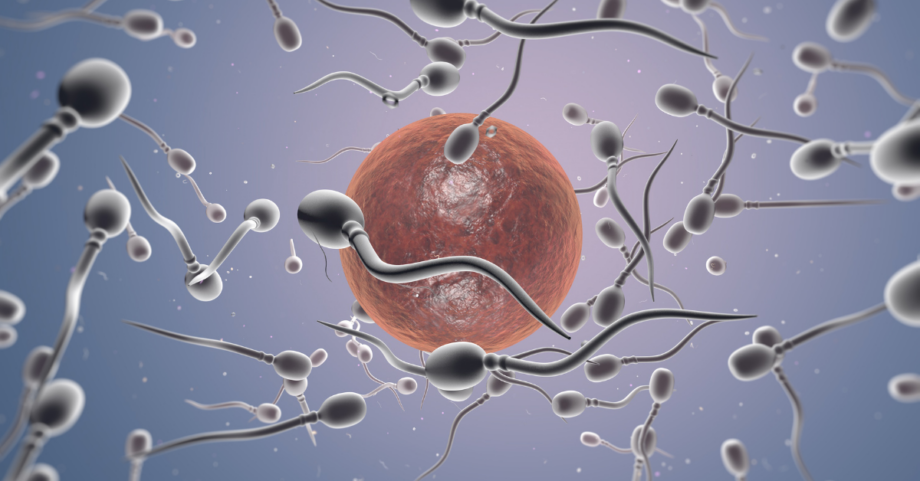When you hear the term “female sperm,” what comes to mind? It feels like a little bit of a juxtaposition, right? We’re most accustomed to associating sperm with the men and people assigned male at birth (AMAB) and the phenomenon of male ejaculation. Are women and people assigned female at birth (AFAB) really producing sperm too?
Let’s start with the basics. The scientific term for female reproductive cells is “ova,” or “egg cells.” The ova are the equivalent or counterpart to the male sperm. You may already be familiar with that relationship since male sperm and female egg cells combine, the result is (drum roll, please) conception. While there’s ongoing research into creating artificial female sperm, a woman’s biological contribution to the so-called "miracle of life" is the ova.
Now that we’ve got the fundamentals, let’s introduce another term: gametes. Both the male sperm and the female egg are considered gametes, although there are key differences in how gametes manifest in men and women. We’ll dive into these nuances, as well as the science behind female gametes, their role in reproduction, and whether we’re looking at a future where the term “female sperm” isn’t as uncommon.
What are gametes?
Gametes are reproductive cells. While this term applies to all living things, in humans, gametes come to life as sperm in males and eggs in females. Think of sperm as small and mobile, while eggs are larger and stationary. Their union during fertilization leads to the creation of a new organism.
As we mentioned, ova are the female half of the conception equation. They’re made in ovaries and provide the nutrients and genetic materials needed to develop an embryo. During reproduction, an ovum (a single ova) fuses with a sperm cell, which then forms what’s called a zygote. This is step one is creating a new life.
While it may seem hard to wrap your head around, egg cell production begins before a woman or AFAB person is even born. Easy germ cells divide and develop into primary oocytes, which stay dormant in the ovaries until a girl or AFAB person reaches puberty. Once they're at reproductive age, oocytes mature and are released during each menstrual cycle. Then, its rinse and repeat about every 30 days until you hit menopause.
There are several key aspects that make eggs different from sperm. Sperm are mobile and designed to travel. Ova pretty much stay put and feature a rounder structure. While sperm are produced in vast quantities, females are actually born with all of the eggs they’ll ever have.
TLDR: Both males and females produce gametes, or sex cells, but the female egg is very different from the male gamete: sperm.
Read More: Pop Your Cork: The Ultimate Guide to Squirting Orgasms
Female Ejaculation and its Relation to Ova
Ah, the wonder of the female orgasm. While this might bring a lot of delicious memories to mind, you’re probably not thinking about this pleasurable release as accompanied by ejaculation – the release of fluid from your glands during arousal or “the Big O.” But female ejaculation, also called squirting, is a completely normal and natural occurrence, though, not every woman or AFAB person experiences it.
A common myth is that female ejaculate contains that ova we were just discussing. Consider that myth busted. Ova are released during ovulation, not during ejaculation. Female ejaculate is composed of fluids from the Skene’s glands. If you look at a blueprint of the female reproductive system, you can find those around the urethra. While the exact purpose of female ejaculation is still being studied, it certainly helps with lubrication during play, and might contribute to sexual pleasure.
It’s important to note that ejaculation is a normal part of sexual health and will vary from person to person. For some women, female ejaculation can enhance sexual pleasure, adding to the overall experience. For others, they may not even notice whether or not they ejaculate. Both cases are totally okay.
The bottom line
So, is "female sperm" really a thing? No.
If you find yourself questioning the correct term for female reproductive cells, remember this little trick: “ova easy.” This wordplay on a favorite breakfast dish can remind you that female gametes are either called ova or egg cells, not female sperm.
Another key takeaway here is that female ejaculate, although sometimes misunderstood, is a normal and potentially pleasurable function unrelated to ova.
Though female sperm isn't a natural occurrence in the female body, artificial female sperm is an active area of research. Some men face fertility obstacles if there is no sperm present in their semen – a condition known as azoospermia. This can make it difficult for couples to have biological children.
While options like donor sperm and adoption are available, many couples deeply desire genetically related children. As such, scientists are also researching ways to create artificial sperm with the goal to one day help all azoospermic couples have their own biological children.
Who knows? Maybe someday in the future, female sperm will be a reality.




